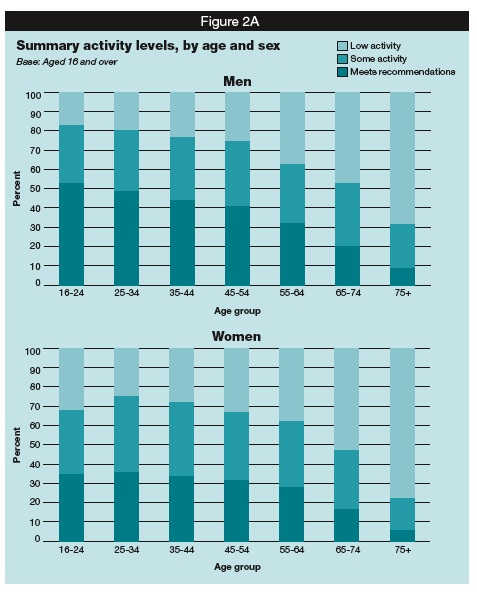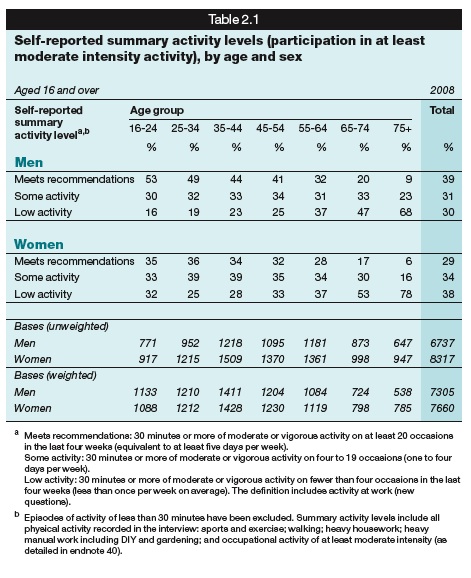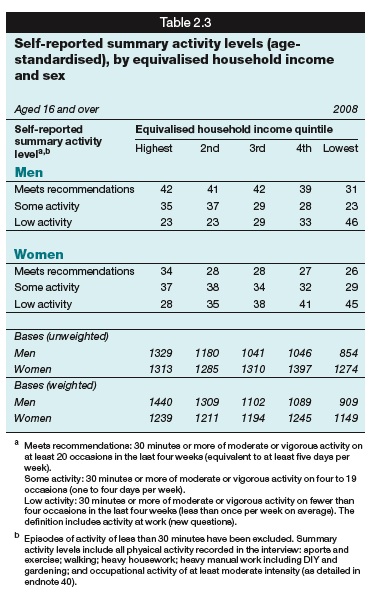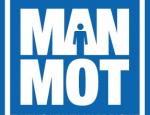My role
- About Us
Men's Health Week 2010 Statistics
Headline figures
- Only 40% of men meet the recommendations for physical activity (30 minutes of at least moderate intensity activity on five or more days of the week, according to the Chief Medical Officer).
 Over a quarter of boys do not meet the recommended physical activity level (at least one hour of moderate or more intense activity a day).
Over a quarter of boys do not meet the recommended physical activity level (at least one hour of moderate or more intense activity a day).- Activity levels fall sharply with age. Men's participation in activity starts to fall sharply in early middle age. Only 20% of men aged 65-74 and 9% of men aged 75 or over meet the recommendations.
- Sport England research shows that only 20% of men participate in sport (defined as at least 30 minutes of sport at moderate intensity at least three times a week, excluding recreational walking and infrequent recreational cycling).
- Most men - 72% - do not know the recommended level of physical activity.
- Men in lower income groups are much less likely to be physically active: men in the lowest 20% in terms of household income are almost twice as likely to be inactive as men in the highest quintile.
- Indian, Pakistani, Bangladeshi and Chinese men are less likely than the general population to meet physical activity recommendations. Bangladeshi men have particularly low levels of physical activity with just 26% meeting the recommendations.
More details on some of the issues and sources of further information follow.
Key issues
 Men compared to women
Men compared to womenAt all ages, males are on average more physically active than women. According to the Health Survey for England 2008 (from which all the tables on this page are taken):
- Adults were asked to recall how much physical activity they had done over the previous four weeks. Based on this self-report survey, 39% of men and 29 % of women aged 16 and over met the Chief Medical Officer's (CMO) minimum recommendations for physical activity. These are that adults should be active at moderate or greater intensity for at least 30 minutes a day on at least five days a week (either in one session or through shorter bouts of activity of 10 minutes or longer). The percentages of both men and women who met these recommendations generally decreased with age.
- A sub-sample of adults then wore a device called an accelerometer for a week following the survey; this device provides an objective measure of physical activity. Based on the week of accelerometry, only 6% of men and 4% of women met the CMO's recommendations for physical activity. Men and women aged 16-34 were most likely to have met the recommendations (11% and 8% respectively), and the percentages of both men and women meeting the recommendations were lower in the older age groups.
For sport specifically, Sport England’s Active People Survey 2008/09 shows that 20% of adult men participated in sport compared to 13% of women. Participation is defined as at least 30 minutes of sport at moderate intensity at least three times a week.
 Age differences
Age differencesAlthough men are more physically active than women and more likely to meet the CMO’s recommendations at all ages, the gradient of decline is much steeper for men than women. Moreover, there is a decline across all age groups in men, whereas for women, this decline only becomes apparent beginning in those aged 45-54
The Health Survey for England 2008 comments:
- The decline with age in the proportion of men and women meeting the physical activity recommendations begins at an older age for women, but activity levels in young women are substantially lower than in young men. This could have implications for strategies to achieve the targets set out in ‘GamePlan’ and ‘Be active, be healthy: A plan for getting the nation moving’. For men, strategies might aim to help them maintain the level of activity they achieve at a younger age into middle age, whereas for women, strategies might be geared toward increasing their level of activity on the whole. The latter is particularly important, as activity levels in girls fall by the onset of adolescence; the decline in activity levels in men between young adulthood and middle age may be equivalent to the decline that happens in girls before adulthood.
 Socio-economic differences
Socio-economic differencesMen in the lowest household income group are much less likely to meet the CMO’s recommendation on physical activity.
The Health Survey for England 2008 highlighted some interesting differences between men and women:
- As shown tables show, for men there was little variation with income in the top four quintiles, while men in the lowest income quintile were least likely to meet the targets (31%). For women, the proportion meeting the targets was highest in the top quintile (34%), and there was little variation in the lowest four. The proportion in the low activity group increased as income decreased, from 23%of men and 28%of women in the highest quintile to 46% of men and 45%of women in the lowest.
Ethnic differences
The Health Survey for England 2004 suggests that men from the Bangladeshi, Indian, Pakistani and Chinese communities are far less likely to meet the CMO’s recommendations than the general population. There are fewer differences between men in the general population and Black African, Black Caribbean and Irish men.
- 37% of the male population meet the CMOs recommendation - 39% Irish, 37% Black Caribbean, 35% Black African, 30% India, 28% Pakistani, 26% Bangladeshi.
- 25% of the female population meet the CMOs recommendation - 31% Black Caribbean, 29% Irish, 29% Black African, 23% India, 14% Pakistani, 11% Bangladeshi.
Further information
There are many good and easily-accessible sources of information on gender and participation in physical activity and sport.
- The Chief Medical Officer’s 2009 Annual Report contains a chapter on physical activity (entitled ‘Moving to nature’s cure’)
- The NHS Information Centre for health and social care has collated a range of data. This includes a link to one of the key sources, the 2008 Health Survey for England. See: .
- The British Heart Foundation’s website also contains a wide variety statistics on physical activity.
- Sport England produces data on participation in sport.
- Two recent government policy reports on physical activity contain some statistical information: Be active, be healthy: a plan for getting the nation moving and Active Travel Strategy.
In This Section
Haringey health humour
I'd rather admit I love John Ryan!


 Donate to the MHF
Donate to the MHF
 Man MOT
Man MOT